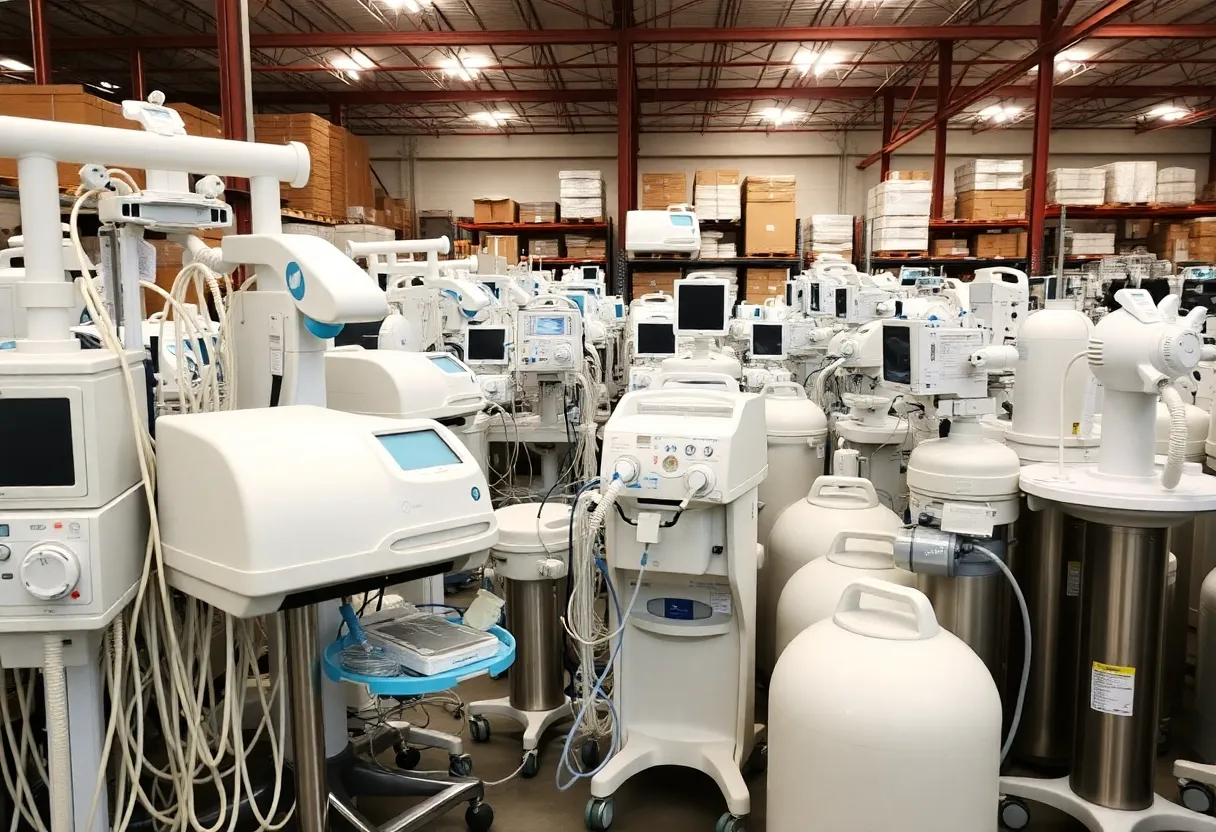News Summary
An audit exposes a staggering $453 million spent on unused medical equipment in New York during the COVID-19 pandemic. Despite the intent to safeguard health, much of this equipment now sits idle. A mere 324 items were distributed, raising concerns about accountability and effective resource management. Officials acknowledge documentation gaps and the challenges faced in tracking these purchases. As the state seeks solutions, the findings urge better emergency preparedness and efficient use of taxpayer funds.
New York State’s Pandemic Purchases Surplus: A Staggering $453 Million of Unused Medical Equipment
A Closer Look at the Audit Findings
New York City is buzzing with news following a recent audit that uncovers a hefty sum of $453 million spent on nearly 250,000 medical items during the COVID-19 pandemic. While these purchases were aimed at ensuring the health and safety of New Yorkers, it appears that much of the equipment is now gathering dust instead of serving its intended purpose.
The report outlines a range of equipment that includes ventilators, X-ray machines, and various respiratory aids like CPAP/BiPAP machines, oxygen tanks, pulse oximeters, and infusion pumps. It’s astounding to note that out of the vast inventory, only 324 items were distributed during the pandemic, and shockingly, a mere three pieces of equipment were actually utilized. How can so much money lead to so little impact?
What’s Happening with All That Equipment?
The audit revealed that a committee has been established to help determine what equipment should be kept moving forward, suggesting the retention of 51,140 items. Yet, approximately 200,000 pieces currently have no real plan in place for use. This raises some significant questions about why the Department of Health did not take more proactive measures to manage the surplus, especially as COVID-19 cases began their steady decline.
Reports indicate that while medical facilities expressed interest in acquiring thousands of these pieces of unused equipment, very few ended up in the hands of those who needed them most. Even more concerning is the fact that there were issues with tracking the purchases, particularly those made with credit cards. A lack of control measures during the pandemic made it challenging for the Department of Health (DOH) to account for every item.
The Cost of Inaction
The audit highlighted not only the waste of taxpayer dollars but also the ongoing costs associated with storing this equipment that is now doing nothing. It’s like having a lavish yacht sitting in your driveway, just taking up space and costing you money without ever seeing the water!
To make matters worse, the records indicating what equipment is in the surplus were managed by a contractor not affiliated with the DOH. It’s hard to comprehend how with such a large inventory, some pieces can’t even be accounted for. This is a significant oversight and reflects poorly on the emergency procurement process put in place during the height of the pandemic.
Recommendations for the Future
As a result of the audit findings, a list of recommendations has been suggested. These include the importance of establishing robust internal controls during future emergencies, preserving documentation to inform decision-making, and developing a strategic maintenance plan for emergency equipment. Alarmingly, 90% of the equipment requiring maintenance is already overdue, and there has not been a contract for maintaining this stockpile for over a year.
A Statement from Health Department Officials
While officials from the health department attempted to defend their actions regarding the surplus, they acknowledged gaps in documentation that have led to inventory discrepancies. The administration pointed fingers at McKinsey & Company, claiming they overestimated the needs, resulting in these unnecessary purchases. But at the end of the day, taxpayers are left holding the bag for storage costs without any real benefit.
A Call to Action
This situation paints a troubling picture of a system that failed to adequately prepare and manage emergency resources. As New Yorkers, it’s crucial to demand better accountability and transparency regarding how public funds are spent. With so many items unaccounted for and so little action taken to redistribute what we absolutely do not need, it begs the question: are we truly learning from the lessons of the pandemic?
As we move forward, let’s hope our leaders take these findings to heart and implement effective strategies for managing medical resources in times of crisis. New York deserves better than a warehouse full of unused equipment costing taxpayers for simply existing. It’s time to turn this surplus into a resource that can genuinely benefit our communities.
Deeper Dive: News & Info About This Topic
- Spectrum News: Audit Reveals Unused Medical Equipment
- Wikipedia: COVID-19 Pandemic in the United States
- New York Post: State Buys Half a Billion in Unused Equipment
- Encyclopedia Britannica: Pandemic
- MSN: NY Spent Over $450M on Unused Medical Equipment
- Google Search: COVID-19 Unused Medical Equipment








